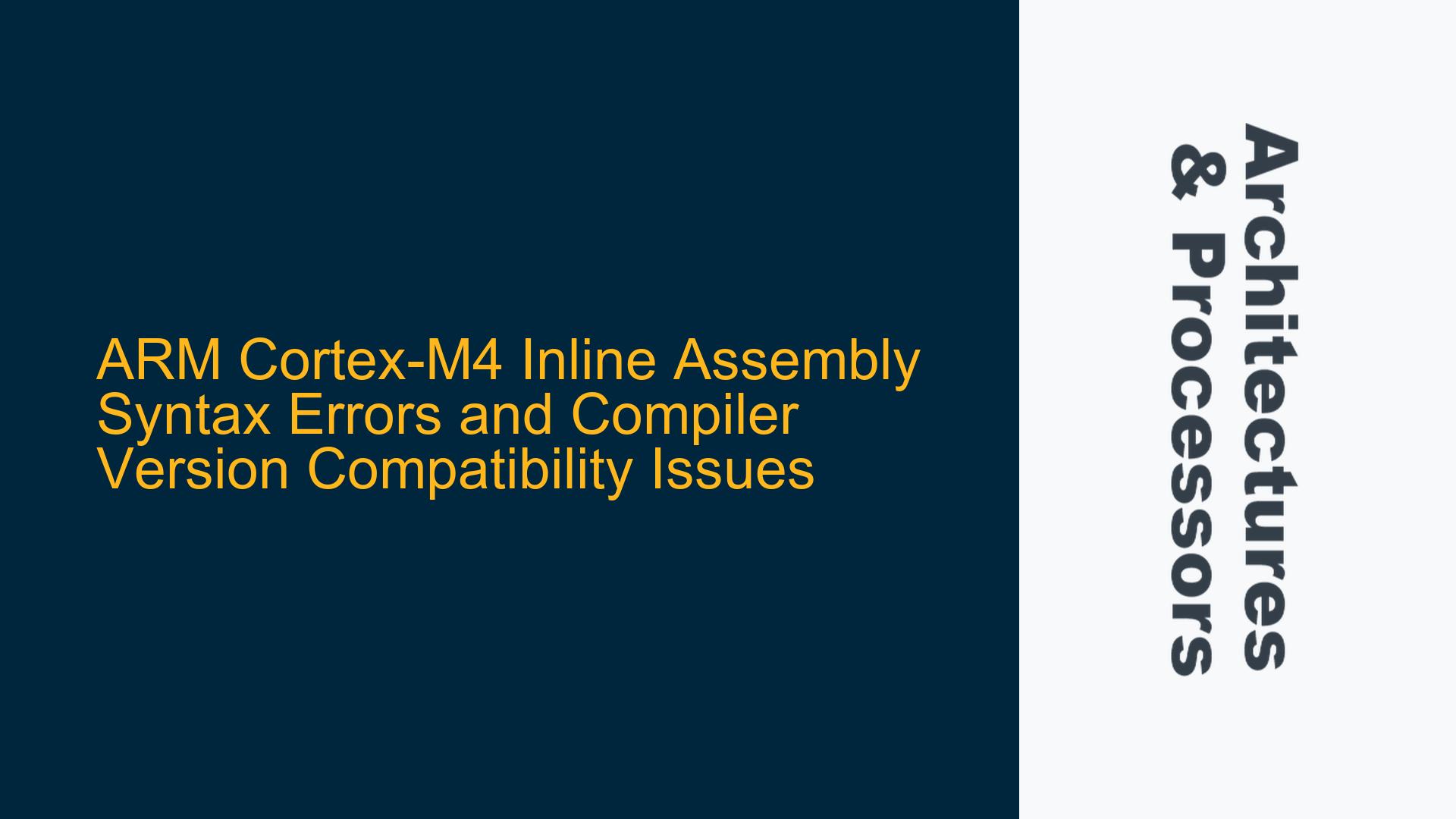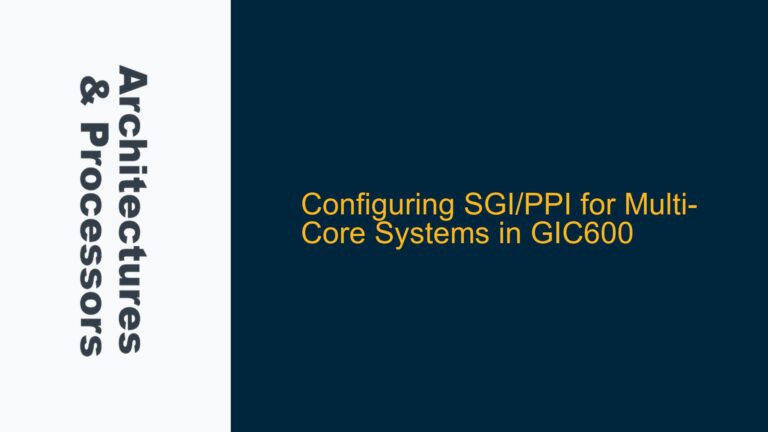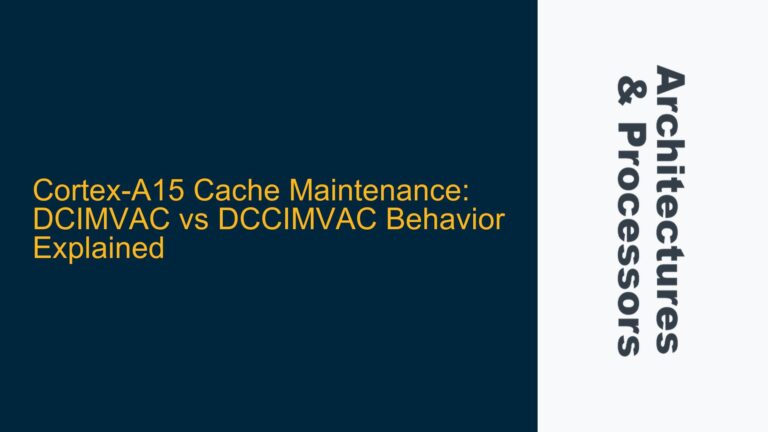ARM Cortex-M4 Inline Assembly Syntax Errors in sysctl.c
The issue at hand revolves around inline assembly syntax errors encountered while working with the ARM Cortex-M4 processor, specifically within the sysctl.c file. The user was attempting to implement UART polling using FreeRTOS on the TM4C1294XL microcontroller when they encountered compilation errors related to the inline assembly code. The errors persisted despite following standard practices for inline assembly syntax, such as ensuring the assembly code is enclosed in a quoted string and placing function declarations outside the __asm statement. The problem was temporarily resolved by switching from ARM Compiler version 6 to version 5, but this raised further questions about the underlying cause of the issue and the implications of using an older compiler version.
Inline assembly is a powerful feature that allows developers to embed low-level assembly instructions directly within high-level C/C++ code. This is particularly useful in embedded systems programming, where fine-grained control over hardware resources is often required. However, inline assembly is also prone to syntax errors, especially when dealing with different compiler versions and their respective interpretations of the ARM architecture’s assembly language.
The ARM Cortex-M4 processor, based on the ARMv7-M architecture, supports a rich set of Thumb-2 instructions, which are a mix of 16-bit and 32-bit instructions designed for high code density and performance. When writing inline assembly for the Cortex-M4, developers must adhere to the specific syntax requirements of the compiler being used. The ARM Compiler version 6, part of the ARM Compiler 6 (AC6) toolchain, introduced several changes in how inline assembly is handled compared to its predecessor, ARM Compiler version 5 (AC5). These changes include stricter syntax checking and enhanced optimization capabilities, which can sometimes lead to compatibility issues with legacy code.
ARM Compiler Version Differences and Inline Assembly Handling
The root cause of the issue lies in the differences between ARM Compiler version 5 and version 6 in handling inline assembly code. ARM Compiler version 6, which is based on the LLVM infrastructure, enforces stricter syntax rules and performs more aggressive optimizations compared to version 5. This can lead to situations where code that compiles successfully under version 5 fails to compile under version 6 due to stricter syntax checking or changes in how inline assembly is interpreted.
One of the key differences between the two compiler versions is how they handle the __asm keyword. In ARM Compiler version 5, the __asm keyword is used to embed assembly code within C/C++ functions, and the syntax is relatively forgiving. However, in ARM Compiler version 6, the __asm keyword is replaced with __asm__ or asm, and the syntax rules are more stringent. Additionally, ARM Compiler version 6 requires that the assembly code be enclosed in a single quoted string, and any function declarations must be placed outside the __asm__ block.
Another significant difference is how the two compilers handle register allocation and clobbering. In ARM Compiler version 5, the compiler automatically handles the allocation of registers for inline assembly code, and developers can use the clobbered list to inform the compiler about which registers are modified by the assembly code. In ARM Compiler version 6, the register allocation and clobbering rules are more explicit, and developers must use the :output and :input operands to specify the registers used by the assembly code. Failure to do so can result in compilation errors or unexpected behavior.
The switch from ARM Compiler version 6 to version 5 resolved the compilation errors in this case, but it is not a long-term solution. ARM Compiler version 5 is an older toolchain and lacks many of the optimizations and features available in version 6. Additionally, using an older compiler version can lead to compatibility issues with newer ARM architectures and processors. Therefore, it is essential to understand the specific syntax requirements of ARM Compiler version 6 and update the inline assembly code accordingly.
Resolving Inline Assembly Syntax Errors and Ensuring Compiler Compatibility
To resolve the inline assembly syntax errors and ensure compatibility with ARM Compiler version 6, developers should follow a systematic approach that includes understanding the syntax requirements, updating the inline assembly code, and testing the changes thoroughly.
The first step is to review the inline assembly code and ensure that it adheres to the syntax requirements of ARM Compiler version 6. This includes using the __asm__ or asm keyword instead of __asm, enclosing the assembly code in a single quoted string, and placing function declarations outside the __asm__ block. For example, the following code snippet shows how to correctly format inline assembly code for ARM Compiler version 6:
void myfunc(uint32_t foo) {
__asm__ (
"ADD x, x, #1\n"
"MOV y, x\n"
);
}
In this example, the __asm__ keyword is used to embed the assembly code, and the code is enclosed in a single quoted string. The function declaration is placed outside the __asm__ block, as required by ARM Compiler version 6.
The next step is to update the register allocation and clobbering rules to comply with ARM Compiler version 6. This involves specifying the :output and :input operands to inform the compiler about the registers used by the assembly code. For example, the following code snippet shows how to specify the input and output operands for an inline assembly block:
void myfunc(uint32_t foo) {
uint32_t result;
__asm__ (
"ADD %[result], %[foo], #1\n"
: [result] "=r" (result)
: [foo] "r" (foo)
);
}
In this example, the %[result] and %[foo] placeholders are used to specify the output and input operands, respectively. The =r constraint indicates that the result variable is an output operand, and the r constraint indicates that the foo variable is an input operand. This ensures that the compiler allocates the correct registers for the assembly code and avoids any conflicts with other parts of the program.
Finally, it is essential to test the updated inline assembly code thoroughly to ensure that it works as expected under ARM Compiler version 6. This includes testing the code on the target hardware, verifying the functionality, and checking for any performance regressions. If any issues are encountered, developers should review the inline assembly code and make any necessary adjustments to ensure compatibility with ARM Compiler version 6.
In conclusion, the inline assembly syntax errors encountered in the sysctl.c file are a result of differences between ARM Compiler version 5 and version 6 in handling inline assembly code. By understanding the syntax requirements of ARM Compiler version 6, updating the inline assembly code accordingly, and testing the changes thoroughly, developers can resolve these errors and ensure compatibility with the latest ARM toolchain. This approach not only addresses the immediate issue but also future-proofs the codebase for use with newer ARM architectures and processors.






